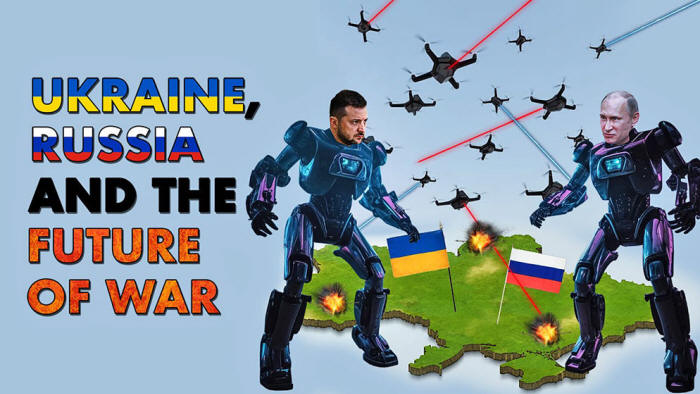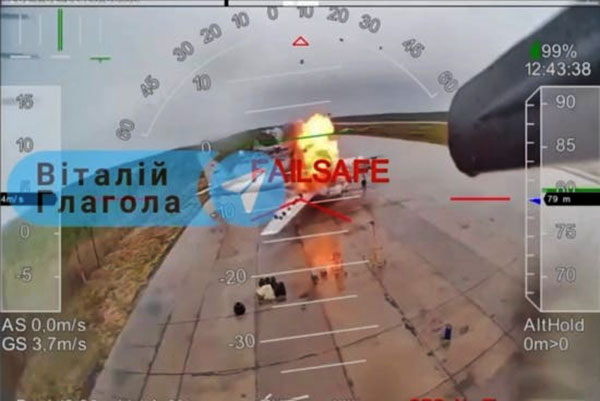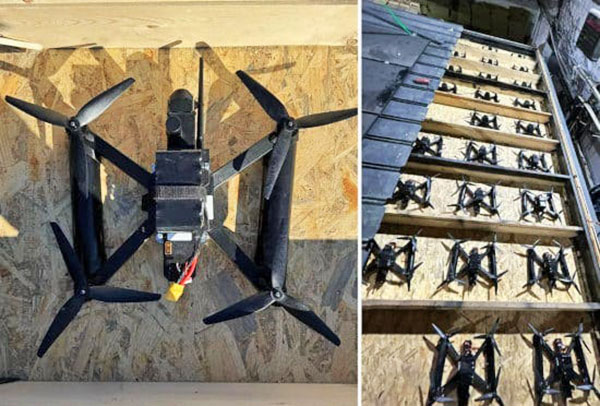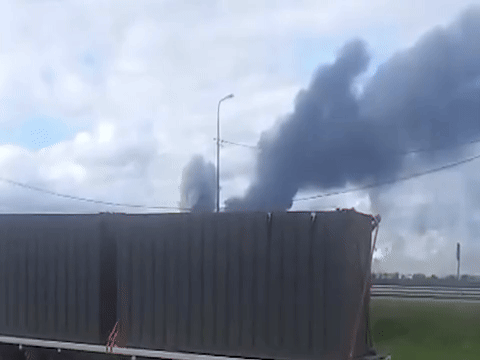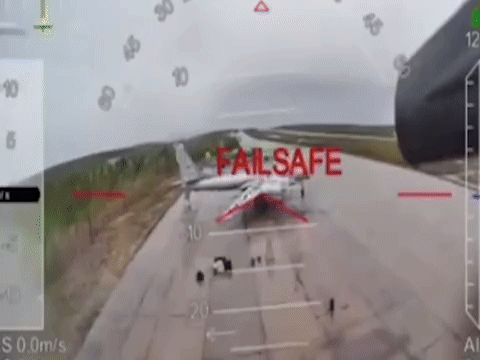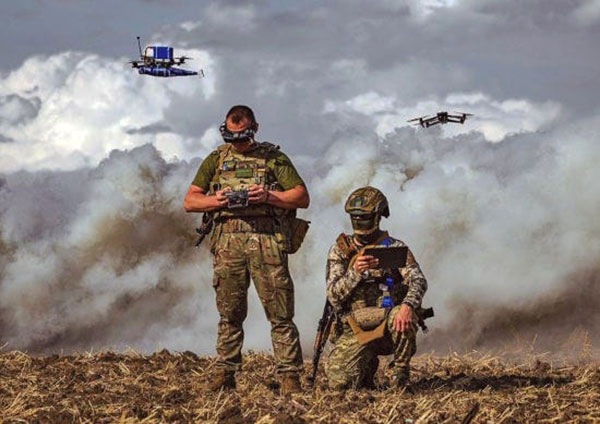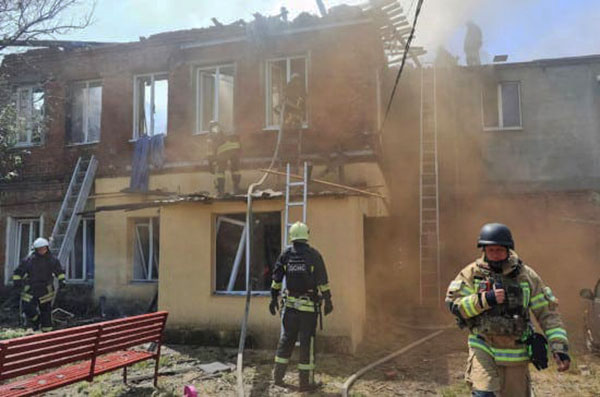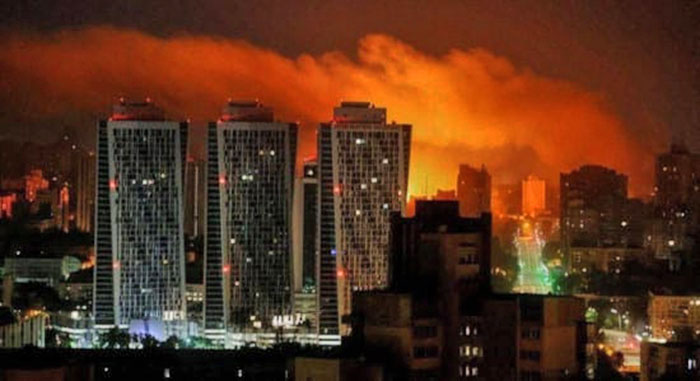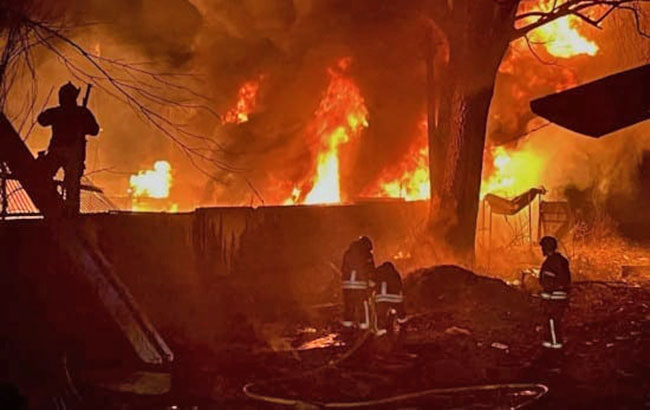|
by James Corbett
In addition to bombing Iran at the behest of Bibi and denouncing his own voter base for caring about the Epstein case, Trump has also just announced his plan to provide Ukraine with billions of dollars worth of weaponry to continue their war against Russia!
For those keeping track at home, that's the very war he promised to end on day one of his new administration...!
Yes, it may seem like a lifetime ago that the fluoride-addled erstwhile "liberals" were draping themselves in the Ukrainian flag and pretending to care about the democratic government [sic] in Kiev... Uh, I mean, "Kyiv."
And it may be increasingly difficult to remember those bygone days of yore when the MAGA cheerleaders who are celebrating Trump's decision to send weapons and aid to Ukraine were denouncing Biden and the neolib warmongers for sending weapons and aid to Ukraine.
But just because the NPCs of the left/right charade have updated their programming and turned their attention elsewhere, it doesn't mean that the Russia/Ukraine conflict has gone away.
In fact, that conflict is escalating by the day...!
While the war in Ukraine may not seem like a big thing to the average bricklayer in Cincinnati or the average steelworker in Hamilton (or the average podcaster in Japan), it is.
In fact,
Don't believe me?
Let's take a look...
THE STRIKE THAT CHANGED EVERYTHING
On June 1, 2025, Ukrainian forces launched a coordinated strike on five separate Russian air bases.
Dubbed "Operation Spiderweb," it was the broadest assault by Ukraine on Russia since the conflict between the two countries began in February 2022.
Even apart from the scope of the attack, however, it was unlike any operation we've seen before.
No, the Ukrainians did not launch a conventional bombing raid on these air bases. Their air force certainly wouldn't be capable of such a strike.
And no, they didn't launch their ATACMS - the US-supplied "Army Tactical Missile Systems" capable of striking targets 300 kilometers away - on those Russian bases.
Ukraine's supply of those cherished ballistic missiles ran out in March. Instead, they used ordinary commercial drones to carry out the attack.
Specifically, on June 1st, 117 Ukrainian-made Osa quadcopters - each carrying 3.2 kilograms of explosives - descended on five geographically disparate Russian air bases:
The drones targeted Russian aircraft parked at those bases, including some of Russia's strategic nuclear-capable bombers, and detonated their payload upon impact, causing significant damage.
And the results of this barrage?
Who knows...!
As is so often the case with these types of wartime operations, reports differ wildly as to how much damage the attack inflicted. But in this case, tallying up the exact figures misses the point.
The point is that the mere fact that Ukraine was able to successfully pull off an attack like this and inflict any damage whatsoever in itself changes the nature of warfare moving forward.
Why?
Because, although the attack was an intricate affair 18 months in the planning, the actual operation itself is within the capability of any nation-state actor on earth.
That operation involved hiding 117 drones in secret compartments built into pre-fabricated mobile homes . . .
. . . and then loading those mobile homes onto trucks and using unwitting Russian truck drivers to drive those drones from Chelyabinsk, 150 kilometers north of the Russia-Kazakhstan border, to the vicinity of the targeted air bases.
The Ukrainians then unleashed the drones - which were piloted remotely by Ukrainian operators "dialing in" to the drones using local mobile networks - to wreak havoc on their targets.
The raid reportedly caused USD$7 billion worth of damage and wiped out a third of Russia's strategic bombers.
And how much did this significant battlefield success cost the Ukrainians?
Yes, for the price of 117 slightly modified but essentially off-the-shelf $2,000 drones, Ukraine scored not only a blow against Russia's air force but, perhaps more significantly, showed that they are capable of striking deep in Russian territory in a way that is almost impossible to detect or defend against.
In other words,
Make no mistake:
THE DRONE WAR INTENSIFIES
Operation Spiderweb may have been the definitive proof-of-concept for the next stage of drone-driven asymmetric warfare, but the use of drones on the battlefield - and, increasingly, in towns and cities far from the "front lines" - is not a new development.
Both Ukraine and Russia have been increasingly relying on drones to strike deep into each other's territory, and spectacular attacks with these unmanned fighting vehicles are now taking place on a daily basis.
Just last week, reports began to emerge that Russia has unveiled a "new tactic" in their war against Ukraine:
A recent air assault on Kyiv was cited as an example.
Russia set 400 drones on the Ukrainian capital from every direction to confuse and preoccupy Ukraine's air defence, thus enabling 20 of its ballistic and cruise missiles to slip through.
This new strategy follows on reports that Russia has started unleashing its drone forces on Ukraine's draft offices in an attempt to undermine Ukraine's military recruitment efforts.
And, just a few days ago, Russia's daily drone onslaught on Ukraine culminated in its largest drone attack to date.
The targets were the key infrastructure of four Ukrainian cities, including Zelensky's hometown of Kryvyi Rih.
Ukraine, in turn, is making the most of its own drone fleet.
Back in May, Ukraine launched a psychologically impactful drone attack on the Kremlin, with dramatic footage of the attack being broadcast around the world.
(Although it totally wasn't Ukraine that did it, guys!)
Earlier this month, Ukraine reportedly conducted successful drone strikes on Russian fighter jet and missile factories.
Two days ago, Ukraine launched one of the largest drone attacks of the war, with the Russian Defence Ministry claiming to have shot down 143 Ukrainian drones in the Moscow region in a single night.
Zelensky is now openly salivating at the prospect of a "mega deal" with Trump that would allow him to swap out Ukraine's humble drone arsenal for more advanced American military drones.
And, in yet another sign that the drone war is an increasingly important part of the broader war between the two countries, earlier this week Ukrainian hackers were crowing about one of their biggest successes to date:
Yes, whether the wider world knows it or not, the Drone Wars are not coming... they're already here...!
And, as terrifying as that is, it gets even worse!
You see, it's not just Ukraine and Russia who are loading up on these flying killing machines.
The Drone Wars Are EverywherePerhaps the clearest indication of the fact that the "future" of drone warfare has already arrived is the latest ridiculous propaganda video from the US Department of Defense.
The video features Trump's Secretary of Defense, Pete Hegseth, signing a memo to expand military use of cheap drones amidst... well, you just have to see it for yourself...:
The video is as stupid and intelligence-insulting as everything that Uncle Sam's propaganda machine spews out, but it does reflect a new reality:
Just ask the Palestinians.
It's obvious by now that drones are a critical part of the future of warfare...
It's also obvious that that "future" is now.
But, even more ominously, the opportunities for low-cost, high-reward military operations that drone warfare offers might make war a more enticing option for countries who would otherwise deem the cost of military action too high.
PREVIEW OF WWIII
The fact that drones enable spectacular military actions like Operation Spiderweb - operations that can do massive damage with minimal expenditure - naturally make them attractive to military planners and ensure that unmanned aerial vehicles are now an essential part of any modern military's arsenal.
But what makes them even more useful is that - as the Russians are demonstrating with their new drone swarm tactic - they are extremely difficult to defend against and they are capable of causing enemies to deplete their expensive and difficult-to-produce anti-aircraft arsenal.
For those who need it spelled out, these traits mean that drones are drawing the world closer to an all-out, global hot war scenario.
Why?
It's not rocket science.
At some point, the "CRINKs" will conclude that the cost of launching "Operation Spiderweb"-like attacks on their Western foes will be low enough to be worthwhile.
And, if they all attack at once, they will be able to overwhelm the US.
Imagine China invading Taiwan, North Korea bombing South Korea, Russia rolling tanks on Kiev and Iran laying siege to Tel Aviv - all simultaneously.
That's not only an increasing possibility in this age of low-cost, low-effort drone warfare, it's also the definition of WWIII:
This isn't some vague notion of a speculative potential threat far off in the nebulous future.
We are told, for example, that both China and Taiwan are already "watching and learning" from the Ukraine/Russia conflict and, with modern drone technology in mind, are adjusting their respective plans for China's potential invasion of Taiwan.
Of course, my knowledgeable readers will know by now that,
In reality,
Yes, as I've discussed before, the WWIII scenario that is coming into view will be a largely phoney struggle between opposition forces controlled by the same globalist oligarchs.
But the slaughter and bloodshed that comes with it will be very real.
And what better tool for sowing confusion and spreading panic could the globalists puppeteering this conflict ask for than unmanned (and potentially autonomous) aerial vehicles?
Imagine swarms of drones appearing out of nowhere, inflicting mass casualties then flying away.
Who knows! But be afraid!
This is the nightmare vision (below video) that I was writing about in "The Drone Wars - You Are Not Prepared":
And it's the vision that has only become more likely in the six months since I penned that editorial...
|


